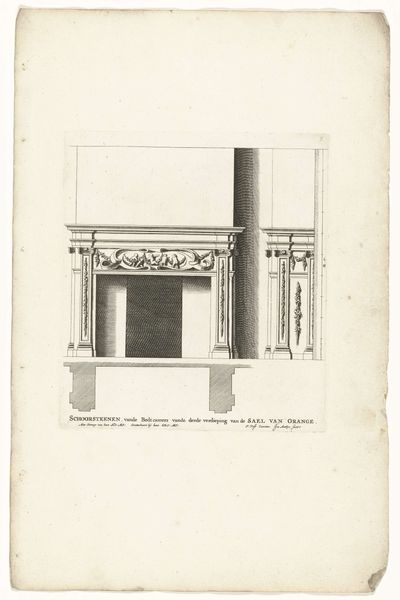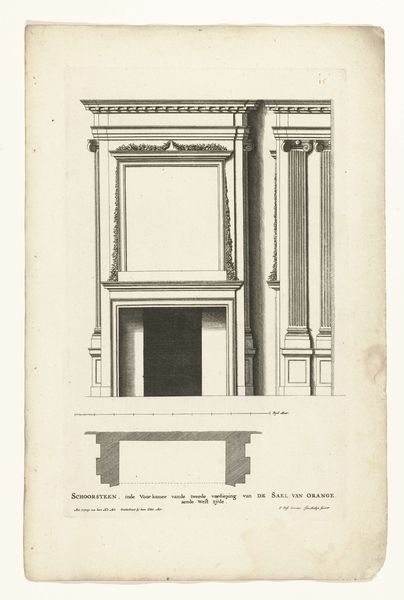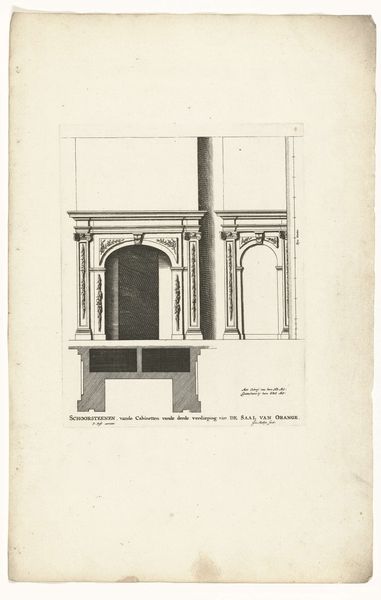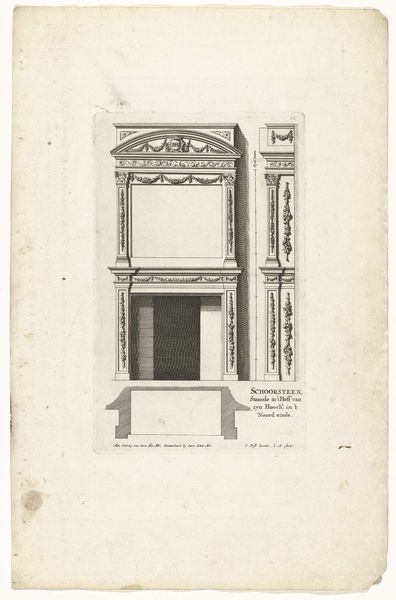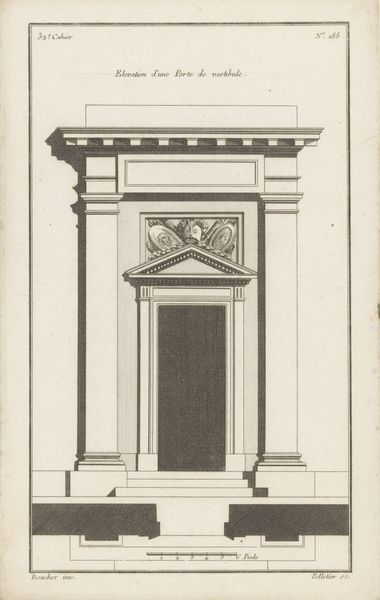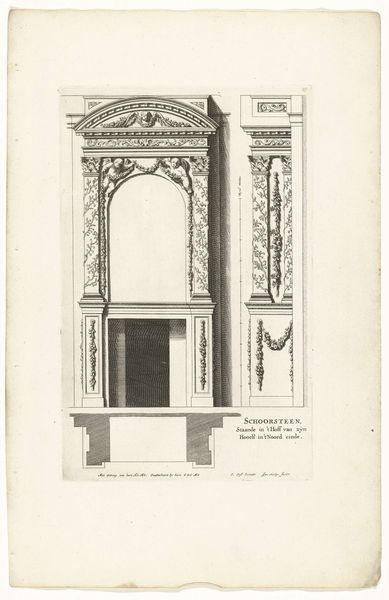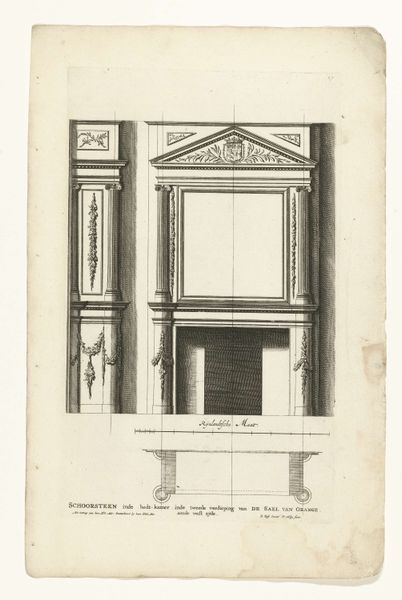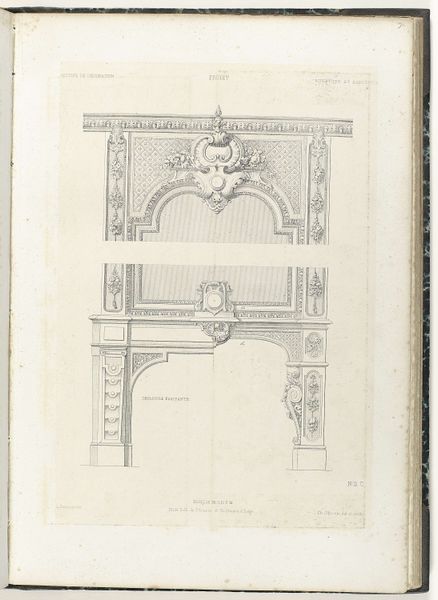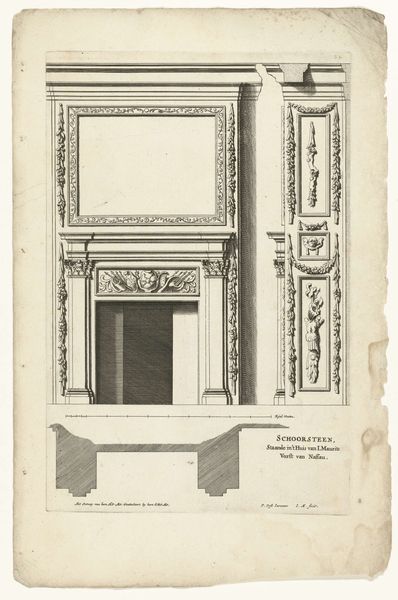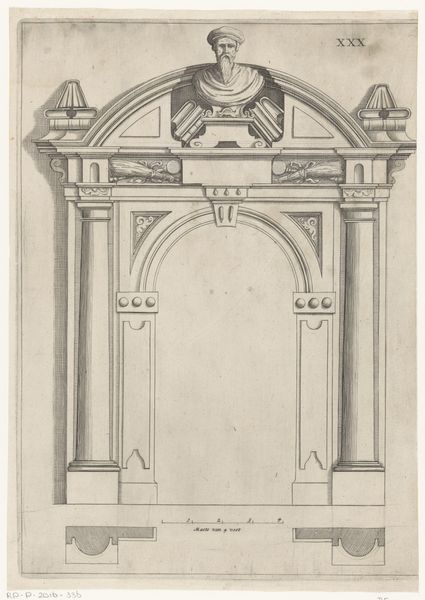
print, engraving, architecture
#
baroque
#
dutch-golden-age
# print
#
landscape
#
geometric
#
line
#
engraving
#
architecture
Dimensions: height 200 mm, width 178 mm
Copyright: Rijks Museum: Open Domain
Editor: This is "Onderboezem in Paleis Huis ten Bosch," a 1664 print, an engraving really, by Jan Matthysz. It's such a precise, almost technical drawing, but the detail gives it a real sense of grandeur. What catches your eye when you look at this? Curator: Well, first, let's consider the context. This engraving represents architectural design during the Dutch Golden Age. How does that make you think about its purpose beyond just being a picture? Editor: I guess it was meant to showcase Dutch affluence and artistry... and perhaps, power? Curator: Precisely. Huis ten Bosch was a significant political symbol for the House of Orange. This idealized fireplace, therefore, wasn’t just functional. What details point to it being something *more*? Editor: The heraldry at the top! It signifies lineage and authority. And all the classical lines... Curator: Good eye. The geometric precision speaks to an era of burgeoning scientific understanding and a desire for order and control, don't you think? Line engravings were popular ways to distribute visual knowledge; who was Matthysz, and who might have seen it at the time? Editor: That is an important question. He could have been contracted to create it as a kind of public relations initiative... reaching architects and other nobility? Curator: Exactly! We must remember how public images helped define identity and advance political agendas even back then. And understanding the visual language is key to unlocking how the elite projected their image. This reminds us that art isn't created in a vacuum, and often reflects - or even reinforces - systems of power. Editor: I never considered the "political" life of fireplaces. This print made me realize that every image is deeply intertwined with society. Curator: Indeed, that’s the fascinating complexity of studying art history. Always question the power dynamics at play.
Comments
No comments
Be the first to comment and join the conversation on the ultimate creative platform.

